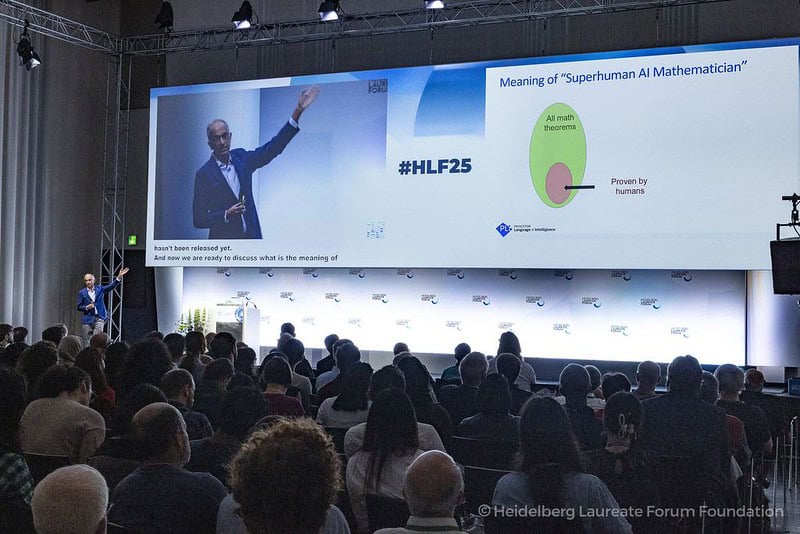Raj Jhaveri is CTO of Greenlane Infrastructure.

getty
Pulling into a gas station, drivers don’t wonder whether the pump will work, whether their credit card will be accepted or how long it will take to get back on the road. Electric vehicle (EV) owners in North America don’t always have that luxury. A charging stop can still mean different plugs, multiple apps and stations that sometimes just don’t work—an experience that risks stalling EV adoption at the exact moment it should be accelerating.
But right now, a convergence of technology, policy and market forces is creating a rare opportunity to fix it. Automakers are aligning on a single standard. Federal funding is coming with real reliability requirements, and heavy-duty trucking is driving demand for megawatt-scale charging. North America has the chance to build a charging ecosystem that drivers and fleets can trust as much as a gas pump—and the clock is ticking.
A Tipping Point For EV Charging
In just the last year, several developments have shifted the landscape and shown an undeniable market momentum. EVs are projected to account for 45% of global new car sales by 2035, increasing to 73% by 2040. Automakers, including Ford, GM, Mercedes and Volvo, have begun adopting Tesla’s North American Charging Standard (NACS). This means we could finally have a single plug standard for most new vehicles.
Federal NEVI funding, with built-in accountability measures, is raising the bar on reliability across networks, as billions in NEVI funds mandate credit card access, roaming interoperability, and uptime transparency. At the same time, megawatt charging for freight is becoming a high-stakes priority, with the Megawatt Charging System (MCS) standard emerging just as Amazon, PepsiCo, and other major logistics fleets roll out electric trucks.
For a rideshare driver juggling three charging apps, a broken station is more than inconvenient; it’s lost income. For a fleet operator, a single failed charger on a freight corridor can derail delivery schedules and cost thousands of dollars per hour. That’s why companies like Pilot, Love’s, Greenlane and Prologis are all investing heavily in charging infrastructure.
North America’s Unique Challenges
Europe’s shorter distances, centralized policy and robust public transportation were all factors in its significant head start on an EV charging standard. North America is different, which is why it needs its own model.
The number of electric medium- and heavy-duty truck sales is projected to reach over 827K globally by 2030. Here, long-haul trucking dominates. Freight corridors often stretch over 500 miles between charging hubs, which demands high-power charging beyond urban centers. Regulation is fragmented, with state-by-state rules that mean even pricing displays can vary across borders. In North America, the private sector leads the build-out. Unlike Europe’s public-sector-led approach, utilities and companies like Greenlane, Prologis, Pilot and Love’s are shaping where and how chargers get deployed.
Beyond Drivers: Why Standards Matter For Everyone
A North American charging standard isn’t just about convenience for EV owners. For utilities, interoperability enables demand forecasting and grid stabilization as EV adoption surges. For manufacturers, standardization lowers costs, simplifies production and accelerates scaling. For investors, fragmentation increases risk while alignment expands the addressable market and ROI potential. In the end, this is economic and industrial strategy as much as climate or technology policy.
If current trends hold, we could see NACS, OCPP and NEVI requirements forming a de facto North American standard by 2026, finally addressing reliability, interoperability and uptime issues at scale. MCS will enable heavy-duty freight electrification, arguably the biggest near-term infrastructure opportunity. Plug-and-charge adoption will also improve the driver experience by eliminating app juggling and membership headaches.
As for wireless charging and vehicle-to-grid (V2G), both remain promising but face hurdles to widespread North American deployment. Wireless charging struggles with cost, efficiency losses and retrofitting challenges. V2G requires close coordination between utilities, regulators and automakers, something that has historically been a challenge amid North America’s fragmented grid. These technologies may arrive eventually, but the real action by 2026 will be on standardization, reliability and corridor buildout, not futuristic features.
The stakes are clear: With 2030 EV adoption targets approaching, failing to align now could leave North America with a fragmented, unreliable system just as demand peaks.
But if industry, utilities and regulators work together toward a digital, decarbonized future, North America could build a network of chargers as convenient and reliable as gas stations.
Forbes Technology Council is an invitation-only community for world-class CIOs, CTOs and technology executives. Do I qualify?
.png)




